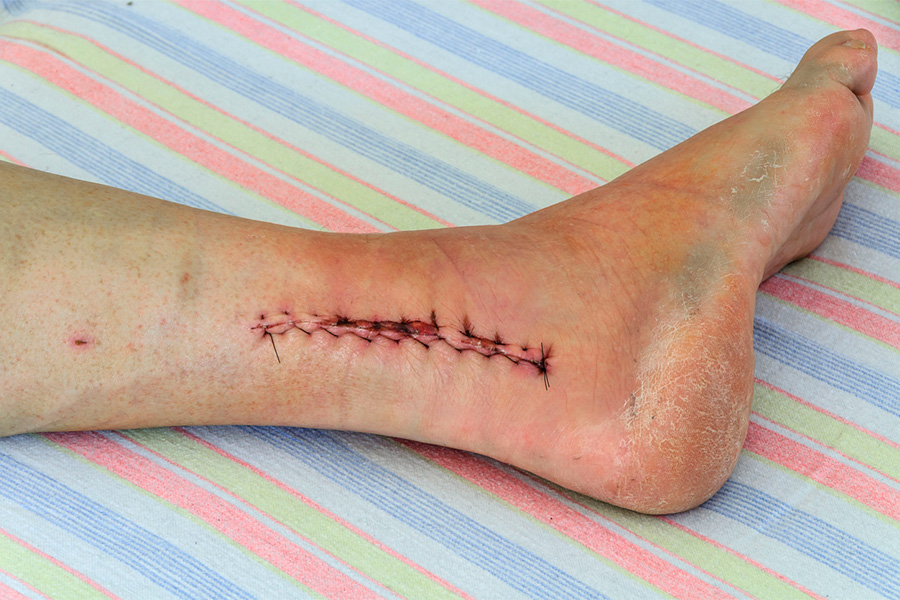See a Doctor
The ankle is a common site for pain and injury. Fortunately, most cases of ankle pain resolve in a few days. Conservative home remedies are often enough to result in a speedy recovery.
However, some causes of ankle pain can result in fractures, infection, and nerve damage that require a visit to a doctor. To correctly assess whether you need to have your ankle pain checked by a specialist, watch out for these warning signs.

Chronic Ankle Pain Or Swelling
Mild cases of ankle pain get better after a few days of conservative treatment. For example, RICE therapy (rest, ice, compression, and elevation) alleviates symptoms within two to three days. So, if your ankle pain does not get better after a couple of days of RICE therapy, consult with a foot doctor.
Chronic ankle pain may indicate a stress fracture, tendonitis, inflammation, or even arthritis. Depending on what caused your ankle pain, your doctor may require you to rest, wear braces or splints, do physical therapy, or take medications. In severe cases, they may consider ankle surgery.
Open Wound
If you injured your ankle and notice an open wound, seek immediate medical attention. This symptom puts you at high risk for complications like:
- Bone infection
- Nerve or blood vessel damage – extensive injury may even lead to tears in the nerves and blood vessels
Deformation Or Bone Misalignment
Deformation or bone misalignment are signs of fracture and thus need immediate medical attention. To avoid further complications, do not try to realign the injured area yourself.
Inability to Move Ankle
If you injured your ankle and experience difficulty moving it even after resting, consult with a specialist. Sometimes, this points to an underlying condition that needs medical treatment.
Fractures and sprains are some common problems that make it difficult to move the ankle. Your doctor will perform several tests to find out how to best deal with your condition. While you wait to see your doctor, do not put any extra pressure on your ankles to prevent further damage.
Fever
In some cases, ankle pain subsides, but numbness follows. Loss of sensation may be caused by nerve damage. This is especially alarming for patients with diabetes because they face a higher risk of peripheral neuropathy due to poor blood circulation. This complication requires immediate medical attention, because it may also lead to other skin issues and infection.
Here are some symptoms you need to watch out for related to peripheral neuropathy:
- Tingling sensation in the affected area that spreads upwards
- Sharp, burning pain
- Sensitivity to touch
- Weakness of the affected area
Numb Ankle
Here are some symptoms you need to watch out for related to peripheral neuropathy:
- Tingling sensation in the affected area that spreads upwards
- Sharp, burning pain
- Sensitivity to touch
- Weakness of the affected area
Ankle Pain Treatment in Cincinnati, Ohio
Your ankles provide mobility and stability, so it’s best to take care of them. If you feel pain, take a rest and avoid moving too much. For persistent symptoms that don’t respond to conservative treatment, seek immediate medical assistance.
Our foot doctors at Cincinnati Foot & Ankle Care specialize in diagnosing and treating foot and ankle conditions. They are board-certified and highly-trained in relieving symptoms of ankle injuries and conditions. Visit any of our 18 clinics in Cincinnati, Ohio. You can book your visit using our online appointment form for your convenience.
We look forward to getting you back on your feet!
Share

Surgeons can provide both surgical and nonsurgical care.

Ankle pain is one of the most common orthopedic complaints.

Less pain, faster recovery, and have a lower risk of complications.


